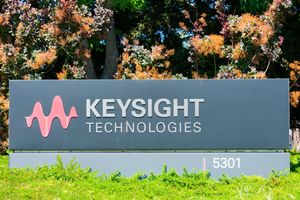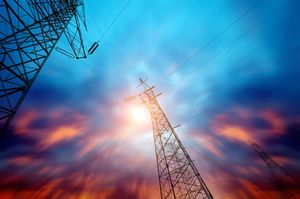In the tower tank room of petrochemical plants, outside the vents of pharmaceutical workshops, and around the boundaries of various manufacturing plants, a small but powerful "sentinel" is quietly deployed - an air pollution monitoring microstation. These seemingly inconspicuous devices are weaving a high-density monitoring network, accurately capturing the "invisible" polluting gases emitted by industrial facilities, and providing unprecedented refined data support for protecting blue skies and public health.
Industrial “Breath”: Where Do Polluting Gases Come From?
1.Petroleum and petrochemical industry:
Source: crude oil processing, tank breathing, equipment leakage.
Key gases:
- Sulfide (SO₂, H₂S): Produced by processing sulfur-containing crude oil, pungent, toxic, and easy to form acid rain.
- Volatile organic compounds (VOCs): Volatilization of oil products, leakage of equipment sealing points (valves, flanges, etc.), complex composition (benzene, alkanes, etc.), are precursors of ozone and PM2.5, and some are carcinogenic.
- Nitrogen oxides (NOx): Produced by heating furnaces and boilers burning fuel, contributing to photochemical smog.
- Particulate matter (PM): Produced by combustion and catalytic processes.
2.Pharmaceutical industry:
Source: chemical reaction, solvent use (extraction, cleaning), fermentation, wastewater treatment.
Key gases:
- VOCs: The main cause is the volatilization of a large amount of organic solvents (such as dichloromethane, acetone), which has a significant odor, contributes to ozone and PM2.5, and some are toxic.
- Acidic gases (HCl, Cl₂, NH₃): by-products of specific synthetic reactions, highly irritating.
- Odor substances: produced by fermentation or specific processes.
3.Manufacturing (chemical, spraying, smelting, electronics, etc.):
Source: fuel combustion, specific processes (spraying, electroplating, smelting), material handling, wastewater and waste gas stations.
Key gases:
- Combustion common gases: SO₂, NOx, CO, PM.
- Process-specific gases: specific VOCs/toxic gases in chemical plants, high-concentration VOCs in spraying plants, SO₂/heavy metals/fluorides in smelters, VOCs/acidic gases in electronics plants.
How does the "micro-station network" weave a protective skynet?
Enterprise self-control: More and more enterprises deploy micro-station networks around factory boundaries, key equipment areas, and LDAR (leak detection and repair) key areas to monitor the impact of their own emissions on factory boundaries and surrounding areas in real time, promptly investigate leaks, evaluate the treatment effects, and fulfill environmental protection responsibilities.
Park supervision: Industrial park managers deploy micro-stations at the park boundaries, main roads, enterprise junctions, and upwind of sensitive targets (schools, residential areas) to form a supervision grid, grasp the emission trends of the entire park and internal enterprises in real time, and quickly coordinate and deal with abnormalities.
Environmental law enforcement: Environmental protection departments use the micro-station network deployed around industrial areas, combined with CEMS and large station data, to conduct refined supervision. Micro-station data can become a powerful basis for discovering abnormal emissions, locking in illegal sources, and evaluating the compliance of enterprises (especially factory boundary standards).
Public supervision: Micro-station data in some areas are open to the public, which improves the transparency of environmental information, facilitates residents to understand the quality of the surrounding environment, and also forms a social supervision force.
Empowered by science and technology, precise governance
The massive real-time data generated by the micro-station is combined with big data analysis and artificial intelligence models:
Precise portrait: Draw a more detailed "polluting gas emission portrait" for each region and even each key enterprise.
Optimized governance: Help enterprises and parks accurately locate weak links in governance, optimize VOCs collection and treatment, LDAR plans, etc., and spend money where it counts.
Scientific decision-making: Provide data support for the government to formulate more precise emission reduction strategies and heavy pollution weather response measures.

Media Contact
Company Name: Tianjin ShareShine Technology Development Co., Ltd.
Email: Send Email
Phone: 0086-022-8371-9741
Address:Building D, No.5 Lanyuan Road
City: Tianjin
Country: China
Website: https://www.tjtytech.com/






